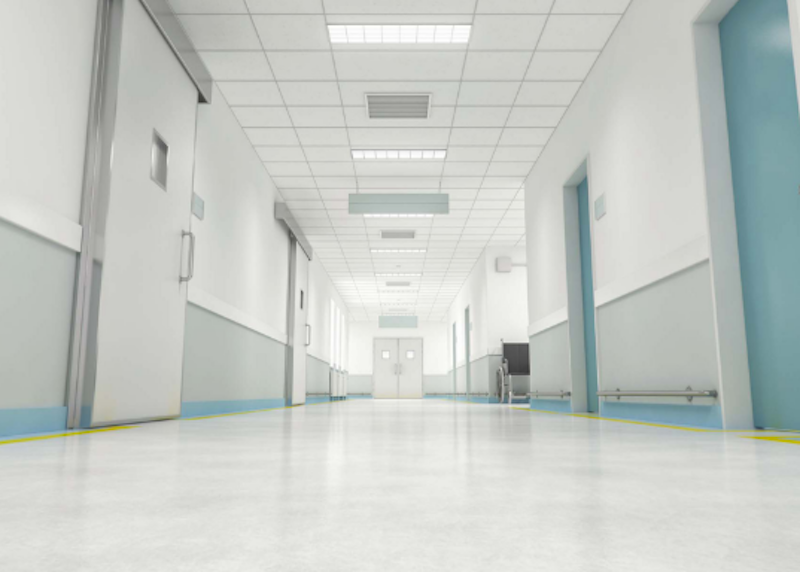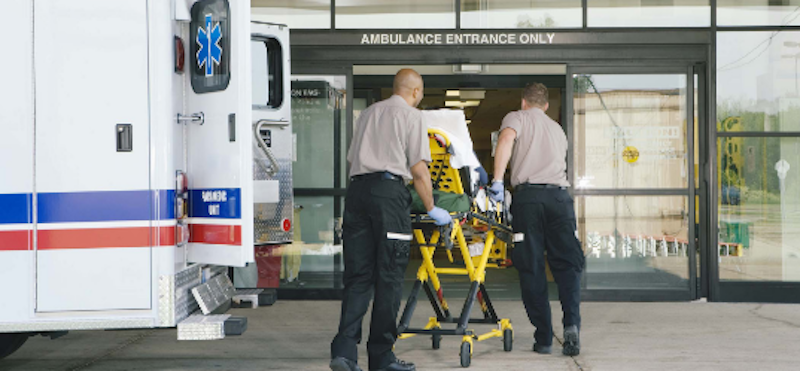Atlanta Falcons fans had much to cheer about in 2016. From Halloween through the stunning conclusion to Super Bowl LI, a strong case can be made that no team in the NFL played better than the Falcons. The real strength of their team was a high-powered offense that seemed at times as though they could score at will. For their many accomplishments, one statistic stands out and that is their performance in the Red Zone.
On a one hundred yard football field, teams are said to enter the Red Zone when they get to (or beyond) the opposing team’s 20-yard line. Good offensive teams can go up and down the field but entering the Red Zone can sometimes seem like entering another zone made famous by Rod Serling where the defense stiffens and strange things happen. Ultimately, offensive teams are judged by their ability to score and teams that routinely convert Red Zone opportunities into touchdowns are tough to beat. In 2016, the Atlanta Falcons converted nearly 3 out of every 4 Red Zone opportunities into touchdowns and were the best in the league at finishing strong and getting into the end zone.
Facility Activation is a lot like operating in the Red Zone. Project teams work for years marching down the field to ultimately arrive at the last few months where myriad final preparations must all come together to operationalize and occupy the new facility. Operating poorly in the project “Red Zone” can cause headaches for your staff, patients and visitors. Proper planning can assist in avoiding pitfalls and, not surprisingly, there is a cost associated with the execution of this phase.
Understanding the costs specifically related to activation is one of the keys to successfully occupying the new space you’ve worked so hard to create. Last month’s CBRE Healthcare Perspective shared the basics of developing a Total Project Budget. It was brought to our attention that we had shortchanged one of the most important components of the master budget – the cost of activating a new facility. So, without further ado and with great apologies to mourning Falcons fans let’s walk through some Facility Activation Budget considerations.

Facility Readiness
Facility Readiness Activities encompass a broad range of tasks that basically cover everything a contractor does not do. Imagine what it would look like if you walked into your new facility once the contractor had completed their scope of work but before anything else had been done. Your image is most likely a bare unfurnished room without artwork or equipment. Supply rooms lack supplies and your laptop is ineffective due to the absence of a wireless network. You look for directional signage to lead you through the facility but none has been installed. Reaching for a phone is pointless as they don’t exist and even if they did, there would be no service. Your badge doesn’t open any secured doors because although the security system is active, the new access points are not programmed into your campus security system. In short – you are so close to the goal line you can see, taste and feel it, but there is still more work that needs to be done to cross that line.
With few if any exceptions, these items must be accounted for in your project plan and budget as they are not optional and are commonly capitalized as part of the overall project cost. Typically, these costs are included indistinct budgets for furniture, signage or medical equipment. Technology budgets often include costs for outside assistance installing a new network(or connecting to an existing one) and imaging and deploying new phones and computers. Exactly where you budget for facility readiness costs is less important than ensuring that you actually account for them. Ask yourself the following key questions:
- What is the contractor not providing and who will provide each of those items?
- Who will install them and ensure that they are operational?
- Are these costs part of the project budget or part of the future operational budget?
Operational Readiness Activities
While Facility Readiness ensures your building is ready for staff and patients, Operational Readiness ensures your staff is ready to work in the building. Tasks include training and orienting staff to the new work flows and may involve dedicated “day in the life” simulation sessions. It is much better to identify “what happened to the crash cart” in a training session as opposed to a real-life emergency. In addition, new equipment may require additional knowledge or skills that don’t currently exist. Brochures or kiosks should be used to assist visitors with new wayfinding. Regulatory approvals and licenses must be obtained or updated. Policies and procedures need to be updated to reflect the new physical space as well as new operational processes that are being implemented in the space.
The vast majority of this work is performed by your staff and their direct leaders. It may come as no surprise that these men and women already have a day job. Consider how you will account for lost productive time while staff are working on not only caring for patients but also preparing to work in a new place. Overtime costs are likely to spike as you approach move day. Many of these costs are often funded out of the organization’s operational budget and are not capitalized as part of the project cost. As you reflect on these issues, ask yourself a few key questions:
- What does the staff need to provide safe and effective care in the new environment?
- How will we ensure that current operations are not negatively impacted during this transition?
- What are the costs associated and how will they be accounted for?

Patient Relocation
Ultimately, we build new healthcare facilities for patients and their families. This is what it’s all about. Moving patients, families and their belongings from one facility to the next is a planning and preparation exercise unto itself. The reality is that healthcare organizations transport patients every day, all day. The main differences when moving to a new facility are the volume of moves, the newness of the situation and the fact that, for a period of time, you need to operate two facilities at once. Great care and detailed planning is mandatory to turn the patient move process into a seamless, safe and low stress event.
Added costs come in a variety of forms. Extra staff are likely needed to facilitate transport along with care in both the new and old facilities. Depending on the distance between facilities and the types of patients being moved, transport vehicles may need to be contracted. Local police often assist in enhancing security or providing for traffic control at busy intersections along the vehicular move route. Local movers may be required to relocate belongings or medical equipment that transfers with a patient. Contractors should be onsite to respond to any emergent issues with the new facility as it comes online. Staff tend to work long hours as move day approaches and, as it turns out, sometimes people like to eat. You may elect to have free food for staff and families as a gesture to all the effort and change people are experiencing. As you plan for your patient move ask yourself the following key questions:
- What is needed to ensure patient care is maintained at the highest level throughout the relocation process?
- What outside resources are needed toaugment our team on this critical day?
- What are the costs associated with theseissues and how will they be accounted for?
Finally
And if all that was not enough, there are a few other things to consider – grand openings, media events, donor events, etc. It’s your time to shine and you spent a ton of money to get there so enjoy it while you can. However, each of these end of project activities also carry costs. The number of events and the cost of those events depends largely on your goals so give some consideration to how and where you want to budget for these items. Hiring of incremental new staff is a major expense that requires careful planning to ensure positions are filled in a timely and effective manner.
In the end, Facility Activation is taking a new space or building and transitioning the ownership from your design and construction team to your staff and patients. Successful execution is a project in and of itself. You should have a project team, a schedule and a budget dedicated to each of these tasks. Leave yourself plenty of time to think through issues and become comfortable with your plan. Do that, and like the Atlanta Falcons, you will score virtually every time.
Related Stories
Daylighting | Aug 18, 2022
Lisa Heschong on 'Thermal and Visual Delight in Architecture'
Lisa Heschong, FIES, discusses her books, "Thermal Delight in Architecture" and "Visual Delight in Architecture," with BD+C's Rob Cassidy.
| Aug 16, 2022
Cedars-Sinai Urgent Care Clinic’s high design for urgent care
The new Cedars-Sinai Los Feliz Urgent Care Clinic in Los Angeles plays against type, offering a stylized design to what are typically mundane, utilitarian buildings.
| Aug 15, 2022
IF you build it, will they come? The problem of staff respite in healthcare facilities
Architects and designers have long argued for the value of respite spaces in healthcare facilities.
AEC Tech | Aug 8, 2022
The technology balancing act
As our world reopens from COVID isolation, we are entering back into undefined territory – a form of hybrid existence.
| Aug 3, 2022
Designing learning environments to support the future of equitable health care
While the shortage of rural health care practitioners was a concern before the COVID-19 pandemic, the public health crisis has highlighted the importance of health equity in the United States and the desperate need for practitioners help meet the needs of patients in vulnerable rural communities.
Healthcare Facilities | Aug 1, 2022
New Phoenix VA outpatient clinic is one of the largest veteran care facilities in the U.S.
The new Phoenix 32nd Street VA Clinic, spanning roughly 275,000 sf over 15 acres, is one of the largest veteran care facilities in the U.S.
Building Team | Jul 12, 2022
10 resource reduction measures for more efficient and sustainable biopharma facilities
Resource reduction measures are solutions that can lead to lifecycle energy and cost savings for a favorable return on investment while simultaneously improving resiliency and promoting health and wellness in your facility.
Healthcare Facilities | Jun 22, 2022
Arizona State University’s Health Futures Center: A new home for medical tech innovation
In Phoenix, the Arizona State University (ASU) has constructed its Health Futures Center—expanding the school’s impact as a research institution emphasizing medical technology acceleration and innovation, entrepreneurship, and healthcare education.
Healthcare Facilities | Jun 20, 2022
Is telehealth finally mainstream?
After more than a century of development, telehealth has become a standard alternative for many types of care.
Codes and Standards | Jun 14, 2022
Hospitals’ fossil fuel use trending downward, but electricity use isn’t declining as much
The 2021 Hospital Energy and Water Benchmarking Survey by Grumman|Butkus Associates found that U.S. hospitals’ use of fossil fuels is declining since the inception of the annual survey 25 years ago, but electricity use is dipping more slowly.

















